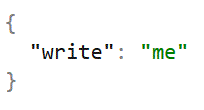In a recent post, I introduced the Audience, Market, and Product framework. Within this framework, it is possible to understand the characteristics of each that influence the documentation plan. During this investigation, you might learn more about each that can also help guide the product development and marketing, in fact, I would be surprised if you didn’t, but I’m going to constrain the scope of this analysis to documentation only.
The previous post described these components of the framework and here, I look at what you need to know about each one to design your documentation plan. In future posts, I’ll describe some of the ways to learn what you need to know about each component.
When reviewing the following points, keep in mind that these aspects can vary over time. For example, the documentation requirements will change as the audience becomes more familiar with the product or the product becomes more (or less) successful in the market. So, it’s important to consider these components as dynamic and not static.
Audience
In looking at the audience, you want to have a clear picture of who the readers are. How will they consume and apply information about the product? This is important to know in order to design the content in a way that they’ll find most useful and effective.
Market
In reviewing the market in which the product is offered, you want to understand the position of both the product and the company in the market. This is essential to develop the rhetorical approach of the documentation that will be most effective for the customer and for the company. For example, does the documentation need to help sell the product or would that tone be inappropriate and counterproductive?
Product
Finally, there’s the product and its aspects that influence documentation. Some of these aspects can be large and obvious, like key features and functionality, while others might appear to be subtle, yet still have considerable impact on the documentation. As with the other components, the ultimate goal of knowing this is to develop a clear picture of what the customer needs to be successful with the product and what the company needs to be successful.
What’s next
In the posts that follow, I’ll present some of the questions to ask in order to find out the what you need to know to design your documentation plan.
 I made it to the top-10 most viewed in General Aviation, this week.
I made it to the top-10 most viewed in General Aviation, this week.
 I’ve suggested in various venues that aspiring (and experienced) tech writers look into open-source projects to find projects they can use to build out their portfolio. In addition to making your portfolio a better place, working on civic-tech open-source projects has the extra advantage of helping to make the world a better place.
I’ve suggested in various venues that aspiring (and experienced) tech writers look into open-source projects to find projects they can use to build out their portfolio. In addition to making your portfolio a better place, working on civic-tech open-source projects has the extra advantage of helping to make the world a better place.